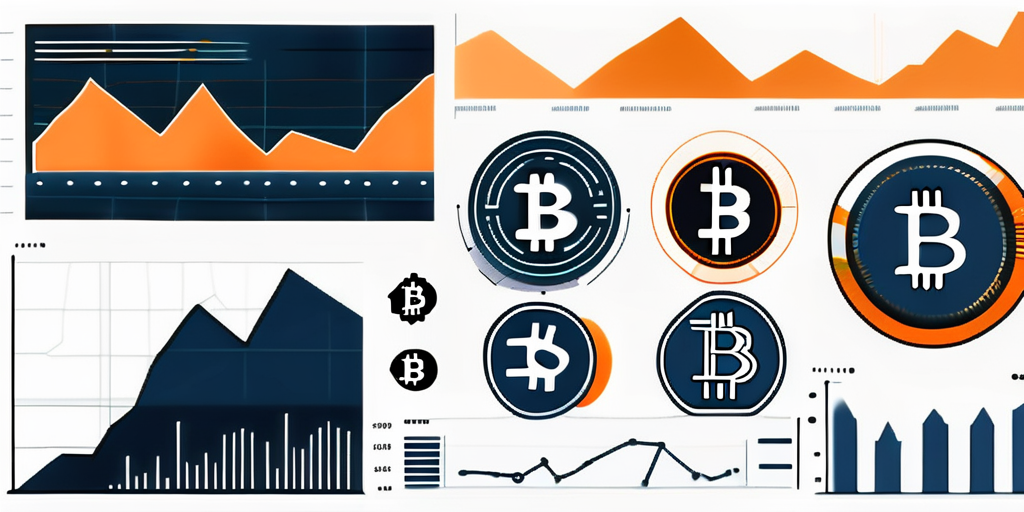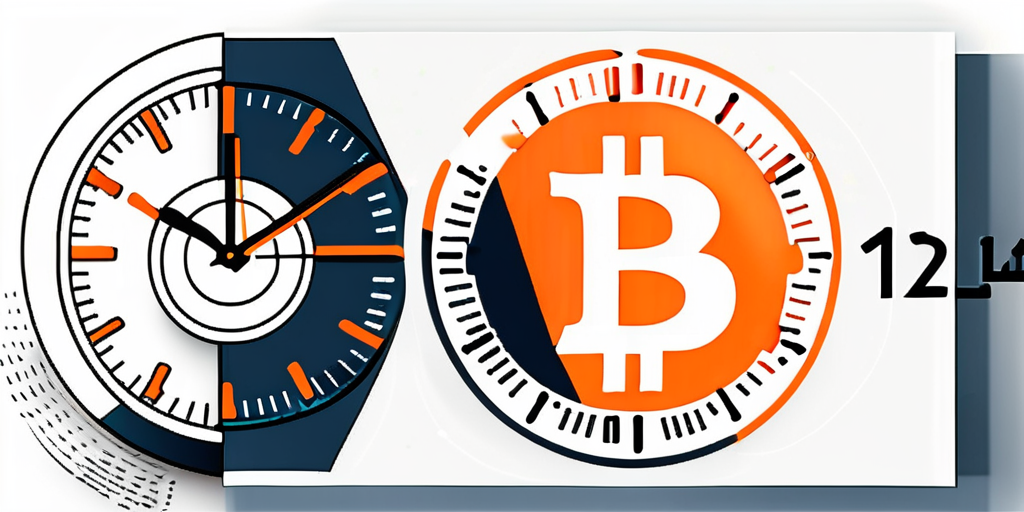What Is Bitcoin Halving? Definition, How It Works and Impact
All products and services featured are independently selected by WikiJob. When you register or purchase through links on this page, we may earn a commission.
Don’t invest unless you’re prepared to lose all the money you invest. This is a high-risk investment and you should not expect to be protected if something goes wrong. Take two mins to learn more.
- Understanding Bitcoin Halving: Definition and Halving Meaning
- Why Halving Matters
empty
empty
empty
empty
- The Role of Halving in Mining Rewards
- Historical Context: Past Bitcoin Halving Events
empty
empty
empty
empty
empty
- Bitcoin Halving 2024: What to Expect
empty
- Halving Countdown and Anticipation
empty
- Frequently Asked Questions
- Final Thoughts
Amid Bitcoin’s many features, one event that captures widespread attention is the Bitcoin halving.
This mechanism, deeply ingrained in Bitcoin's protocol, plays a crucial role in its economic model and directly influences its market dynamics.
Bitcoin halving, at its core, is a predetermined event that reduces the reward for mining new blocks by half. Occurring approximately every four years, this event is not just a technical adjustment but a moment of significant impact on the entire Bitcoin ecosystem, affecting miners, investors and the market at large.
This article delves into the concept of Bitcoin halving, breaking down the halving meaning, the mechanics behind it and its historical context.
We will explore what the 2025 halving might entail for the cryptocurrency and provide insights into the countdown and anticipation surrounding future halving events.
Understanding Bitcoin Halving: Definition and Halving Meaning
Bitcoin halving is a pivotal event programmed into the Bitcoin network that occurs once every 210,000 blocks, or roughly every four years.
This event cuts the reward given to Bitcoin miners for processing transactions and adding new blocks to the blockchain in half.
Initially, the reward for mining a single block was 50 bitcoins. Following the first halving in 2012, this reward was halved to 25 bitcoins, and it has continued to halve at subsequent intervals, further reducing the mining reward.
The primary purpose of halving is to control the supply of new bitcoins entering circulation, thereby mimicking the scarcity and deflationary characteristics of precious metals like gold.
This design is intended to prevent inflation and preserve the purchasing power of Bitcoin over time.
As a built-in economic model, halving ensures that the total supply of bitcoins will never exceed 21 million coins, making Bitcoin a deflationary asset by nature.
Why Halving Matters
Halving is crucial for several reasons:
Controlled Supply and Inflation
By reducing the rate at which new bitcoins are generated, halving helps control the supply and, by extension, Bitcoin's inflation rate.
This controlled supply model is in stark contrast to fiat currencies, where central banks can print money without limit, potentially leading to inflation.
Increased Scarcity
Each halving event increases the scarcity of Bitcoin. As rewards for miners decrease, the cost of producing new bitcoins goes up, theoretically driving up the value of Bitcoin due to its increased scarcity.
Long-Term Sustainability
The halving events are designed to ensure that Bitcoin remains a viable and valuable asset over the long term.
By gradually reducing the block reward, Bitcoin's issuance model aims to extend the mining incentive structure over a century, ensuring that miners are rewarded for their critical role in securing the network.
Market Impact
Historically, halving events have led to significant volatility and interest in the Bitcoin market.
Many investors and enthusiasts closely watch these events, speculating on their potential impact on Bitcoin's price and the broader cryptocurrency market.

The Role of Halving in Mining Rewards
Bitcoin mining involves solving complex cryptographic puzzles to validate transactions and add them to the Bitcoin blockchain.
Miners compete to solve these puzzles using powerful computers.
The first miner to solve the puzzle for each block is rewarded with newly minted bitcoins.
This process not only introduces new bitcoins into circulation but also secures the network by ensuring that transactions are verified and immutable.
The progressive reduction in mining rewards serves several purposes:
-
Controlling Bitcoin supply – The halving mechanism ensures that the total supply of Bitcoin grows at a decreasing rate until it reaches the maximum supply cap of 21 million bitcoins. This controlled supply model simulates scarcity, which can contribute to Bitcoin's value over time.
-
Incentivizing miners in the long term – Even as block rewards decrease, the increasing value of Bitcoin, in theory, ensures that mining remains economically viable for participants. Additionally, miners also collect transaction fees as part of their rewards, which become more significant as the block reward decreases and as the network grows in usage.
-
Adjusting to technological advancements – As technology advances, mining equipment becomes more efficient. The halving event helps counterbalance increased mining efficiency that could otherwise lead to faster production of bitcoins, ensuring the longevity and stability of the Bitcoin network.
Halving can have a profound impact on miners, particularly those with less efficient operations. The immediate effect is a reduction in revenue, prompting miners to seek more efficient mining hardware and cheaper electricity sources to maintain profitability.
This dynamic can lead to increased centralization in mining operations, as only the most efficient miners can afford to continue operating.
However, the potential increase in Bitcoin's value post-halving can offset the reduced block reward, motivating miners to persevere through the transition.
Historical Context: Past Bitcoin Halving Events
To fully appreciate the significance of BTC halving, it is essential to look back at the historical events and understand their impact on Bitcoin's development, price and the mining community.
Since Bitcoin's inception in 2009, there have been several halving events, each marking a pivotal moment in the cryptocurrency's journey.
First Halving – November 2012
Original Reward: 50 BTC
Post-Halving Reward: 25 BTC
This event was Bitcoin's first test of the halving mechanism. The price of Bitcoin saw a gradual increase in the months leading up to and following the halving.
This period marked the beginning of wider recognition and adoption of Bitcoin, setting the stage for future growth.
Second Halving – July 2016
Original Reward: 25 BTC
Post-Halving Reward: 12.5 BTC
The second halving occurred during a time of increased public awareness and interest in Bitcoin. The event was followed by a significant bull run in 2017, where Bitcoin's price reached unprecedented highs.
The correlation between the halving and the price surge highlighted the potential impact of supply reduction on market dynamics.
Third Halving – May 2020
Original Reward: 12.5 BTC
Post-Halving Reward: 6.25 BTC
The most recent halving took place amidst a global pandemic, yet Bitcoin's price resilience and subsequent rally to new all-time highs in late 2020 and early 2021 demonstrated its growing acceptance as a digital store of value.
This event underscored the maturation of Bitcoin as an asset class and its decoupling from traditional economic factors.
Future Halving Events
The concept of Bitcoin halving extends far beyond the upcoming 2025 event, reaching into the future with a series of halvings that will continue to shape the Bitcoin ecosystem.
Understanding the long-term implications of these scheduled events is essential for grasping the broader vision of Bitcoin's deflationary economic model and its impact on the cryptocurrency's sustainability and valuation.
Following the 2024 halving, the Bitcoin community will anticipate subsequent halvings approximately every four years, with each event reducing the block reward by half until the maximum supply of 21 million bitcoins is reached.
This process is expected to continue until around the year 2140, at which point all bitcoins will have been mined, and miners will be incentivized solely through transaction fees.
Analysis of the Impact of Each Halving Event
Each halving event has been a catalyst for significant changes in Bitcoin's ecosystem:
-
Price volatility and growth – Halving events have historically been followed by periods of price volatility and, eventually, significant growth. This pattern underscores the fundamental economics of supply and demand; as new supply decreases while demand remains steady or increases, price tends to rise.
-
Miner community adaptation – Miners must adapt to the reduced block rewards. Efficiency becomes crucial, leading to technological advancements in mining hardware and strategies to optimize operational costs.
-
Increased mainstream interest – Each halving has coincided with increased media attention and public interest in Bitcoin. This growing awareness contributes to the adoption and acceptance of Bitcoin as a legitimate financial asset.

Bitcoin Halving 2024: What to Expect
The Bitcoin halving 2024 event is expected to reduce the block reward from 6.25 bitcoins to 3.125 bitcoins.
This event will mark another significant milestone in Bitcoin's timeline, further constraining the supply of new bitcoins entering the market.
As with previous halvings, the exact date of the event will depend on the speed at which blocks are mined, though it is projected to occur in the spring of 2024.
2025 Predictions and Expert Opinions
-
Market impact – Experts and analysts often cite the supply-demand economic model to predict bullish market behavior post-halving. However, it's crucial to acknowledge the influence of external factors such as regulatory changes, technological advancements and broader economic conditions, which can also significantly impact Bitcoin's price.
-
Miner adaptation – Decreased block rewards will prompt further evolution in mining technology and strategies to maintain profitability. The efficiency of mining operations will become even more critical, potentially accelerating the consolidation within the mining industry towards more efficient and financially robust participants.
-
Institutional and retail interest – As awareness and understanding of Bitcoin's halving events grow, the anticipation could drive more participants into the market, potentially increasing demand and volatility in the lead-up to the halving.
Halving Countdown and Anticipation
The Bitcoin halving countdown has become a focal point for the cryptocurrency community, serving as a symbolic timer to one of the most anticipated events in the crypto space.
This countdown not only marks the time until the next halving event but also symbolizes a period of speculation, preparation and excitement within the Bitcoin ecosystem.
Tools and Resources for Monitoring
Several tools and resources have been developed to help enthusiasts and investors keep track of the countdown to when the next Bitcoin halving is:
-
Dedicated websites – Websites specifically designed to monitor the Bitcoin halving countdown provide real-time updates on the number of blocks mined and the estimated time until the halving occurs. These sites often include additional information, such as historical data on past halvings and their impact on Bitcoin's price.
-
Cryptocurrency news platforms – Many cryptocurrency news outlets feature halving countdowns as part of their broader coverage, offering analyses and predictions on how the halving might affect the Bitcoin market.
-
Social media and forums – Cryptocurrency communities on platforms like X (Twitter), Reddit and Bitcoin forums actively discuss the countdown, sharing insights and speculations about the upcoming event. These communities can be valuable sources of information and sentiment analysis as the halving approaches.
While the exact dates of future halvings cannot be precisely predicted due to the variable rate of block creation, the approximate four-year interval between halvings provides a rough timeline for these events.
Tools and models that monitor the blockchain's current state can offer estimates, but the inherent fluctuations in mining activity and network participation make exact predictions challenging.
Frequently Asked Questions
Halving is considered positive for Bitcoin, reinforcing its scarcity by reducing the rate of new coins entering circulation. This scarcity can potentially increase demand and price, emphasizing Bitcoin's value as a deflationary asset against inflationary fiat currencies, though market conditions also play a significant role.
Historically, Bitcoin's price has trended upwards following BTC halving events, attributed to increased scarcity and demand. However, this trend is not guaranteed, as market dynamics, global economic factors and investor sentiment can influence price movements in unpredictable ways.
The value of Bitcoin post-halving can fluctuate widely, influenced by market sentiment, supply and demand dynamics and broader economic factors. Previous halvings have led to price increases over time, but exact future values are speculative and subject to changing market conditions.
Halving directly impacts Bitcoin by reducing miner rewards, thus decreasing the rate of new bitcoin creation. This can lead to increased scarcity, potentially boosting Bitcoin's value if demand remains constant or grows. Additionally, it may influence mining profitability and market sentiment, contributing to short-term volatility and long-term sustainability.
Final Thoughts
Bitcoin halving is a cornerstone of the cryptocurrency's economic model, ingeniously designed to ensure its scarcity, value and security over time.
By systematically reducing the rate at which new bitcoins are created, halving events highlight Bitcoin's contrast with traditional fiat currencies and underscore its potential as a long-term store of value. While these events bring with them a degree of speculation and volatility, they also foster a deeper understanding and appreciation for the intricate mechanisms that underpin Bitcoin.
As we look toward the future, the anticipated halvings present opportunities and challenges for miners, investors and the broader Bitcoin community.
These events serve as timely reminders of the importance of sustainability, technological advancement and strategic planning within the cryptocurrency ecosystem. Moreover, they captivate the collective imagination, sparking discussions, analyses and predictions that enrich the community's knowledge and enthusiasm.
Don’t invest unless you’re prepared to lose all the money you invest. This is a high-risk investment and you should not expect to be protected if something goes wrong. Take two mins to learn more.




